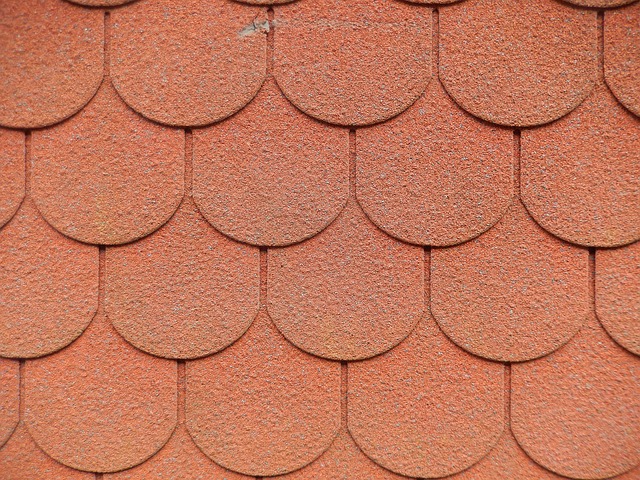In today’s world, embracing sustainability is paramount, especially in the construction sector. This article explores eco-friendly and recyclable roofing materials as a step towards a greener future. We delve into the adverse impacts of traditional roofing solutions and highlight the growing demand for durable roof options that minimize environmental harm. By examining various sustainable roofing types, their benefits, and implementation strategies, we aim to inspire a shift towards environmentally conscious choices in the industry.
Understanding the Impact of Traditional Roofing Materials
The roofing industry has long relied on traditional materials like asphalt shingles, which, while widely used, come with significant environmental consequences. These conventional choices contribute to vast amounts of waste ending up in landfills each year due to their non-recyclable nature. Furthermore, the production processes involved often release harmful pollutants into the air and water, exacerbating climate change and pollution.
As a result, there’s a growing need for durable roof options that offer both sustainability and longevity without compromising quality. Eco-friendly alternatives like recycled metal roofing or plant-based composites not only reduce waste but also provide energy efficiency, lowering a building’s carbon footprint. These materials represent a significant step towards a greener future, ensuring that our homes and communities remain protected while preserving the planet for generations to come.
The Rise of Eco-Friendly Roofing Solutions
The demand for eco-friendly and sustainable roofing solutions has been steadily rising, driven by a growing awareness of environmental issues and a desire to reduce carbon footprints. Traditional roofing materials often contribute to waste and pollution due to their non-recyclable nature, leading homeowners and builders to seek out more environmentally conscious alternatives. Durable roof options that offer both functionality and sustainability are now readily available, catering to this growing market demand.
These innovative roofing solutions not only minimize environmental impact but also provide long-lasting performance. By utilizing materials like recycled metal, bamboo, or plant-based composites, the roofing industry is offering viable, durable roof options that contribute to a greener planet. This shift towards sustainability ensures that future generations can enjoy cleaner air and reduced ecological strain, all while benefiting from robust and aesthetically pleasing roofs.
Types of Sustainable and Recyclable Roofing Options
When considering sustainable roofing materials, there’s a plethora of eco-friendly and recyclable options available. One popular choice is recycled metal roofing, which not only reduces landfill waste but also offers exceptional durability. These metal panels can be made from recycled aluminum or steel, ensuring longevity and minimal environmental impact. Another innovative option is biodegradable shingles derived from natural materials like wood chips or bamboo, which break down harmlessly over time.
Additionally, living roofs or green roofs are gaining traction as they provide insulation, reduce urban heat islands, and support local ecosystems. These roofs incorporate plant life, either through soil-based gardens or hydroponic systems, offering a unique blend of functionality and environmental friendliness. Furthermore, some manufacturers produce synthetic roofing shingles made from recycled plastic bottles, transforming waste into durable and aesthetically pleasing alternatives to traditional materials.
Benefits of Choosing Eco-Conscious Roofs
Choosing eco-conscious roofing materials offers a multitude of benefits, both for the environment and your property. One of the key advantages is their sustainability. These materials are designed to be durable, minimizing the need for frequent replacements, which reduces waste and conserves natural resources. Many eco-friendly options also have a lower environmental impact throughout their lifecycle, from manufacturing to disposal or recycling.
Additionally, optings for sustainable roofing can contribute to energy efficiency. Some materials provide excellent insulation, helping to regulate indoor temperatures and reduce the strain on heating and cooling systems. This not only saves energy but also lowers utility bills for homeowners. Moreover, these durable roof options can enhance a building’s overall aesthetics, appealing to environmentally conscious consumers who value both style and sustainability.
Implementing and Promoting Durable, Green Roofing Practices
Implementing sustainable roofing practices is a key step towards creating eco-friendly living spaces and contributing to a greener future. One of the primary focuses should be adopting durable roof options that offer both environmental and economic benefits. By choosing materials like recycled metal, bamboo shingles, or plant-based composites, homeowners and builders can reduce their carbon footprint significantly. These green roofing solutions not only minimize waste but also provide long-lasting durability, ensuring a robust shield for structures against harsh weather conditions.
Promoting these practices involves raising awareness about the benefits of eco-friendly roofing to both professionals in the construction industry and the general public. Educational campaigns can highlight how these durable roof options contribute to energy efficiency, reduced landfill waste, and a healthier environment. Additionally, incentives and local building codes that encourage the use of sustainable materials can drive the adoption of these practices, ensuring a more sustainable future for our built environments.
As we’ve explored, traditional roofing materials significantly impact our environment. Fortunately, eco-friendly and recyclable alternatives like durable roof options are transforming the industry. By choosing sustainable roofing solutions, we can reduce waste, conserve resources, and contribute to a greener future. Let’s embrace these innovative practices and promote durable, green roofing for a brighter tomorrow.
